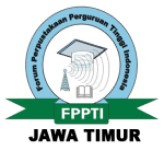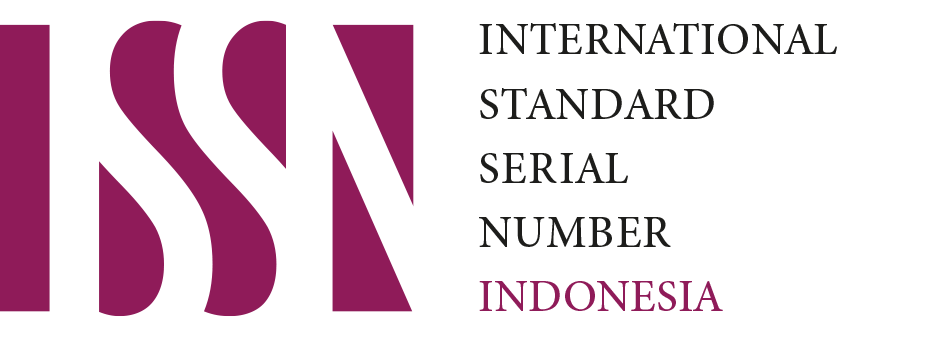Library Anxiety among the First-Year Undergraduate, Master's, and Doctoral Students at Universitas Gadjah Mada
Downloads
Background of the study: As a unit in a University, library has a role to help users by providing library services, especially for the first-year students who are accepted in large numbers each year. The large number of admitted first-year students need attention from university, especially library, by conducting socialization activity to reduce library anxiety. There are still many first-year students feel anxiety in themselves.
Purpose: This study aims to measure the first-year student's anxiety level in and to compare anxiety level of students who participate and do not participate in library services socialization, between levels, factors, and between groups of external and internal factors that affect the anxiety level of first-year students.
Method: This study used a quantitative approach by using survey research method. There were 336 respondents that involved in this study; 236 respondents from undergraduate program, 87 respondents from master program, and 13 respondents from doctoral program. This study used convenience sampling to collect the data and SPSS 25 to analyze the data.
Findings: The results of this study indicate that the first-year students have low anxiety level.
Conclusion: There is a significant difference between students who participated and those who did not participate in socialization activity; they have different library anxiety level at all levels; There is a significant difference between the factors affecting anxiety level of first-year students; There is no
Downloads
Anwar, M.A, Al-Kandari, N.M, Al-Qallaf, C.L. (2004). Use Bostick's Library Anxiety Scale on
undergraduate biological sciences students of Kuwait University. Library and Information
Research, 26, 266-283.
Biglu, M.-H, Ghavami, M., Dadashpour, S. (2016). Big five personality factors and library anxiety.
Journal of Behavioral and Brain Science, 6, 377-385.
Blanchard, R. J., Blanchard, D. C., Griebel, G., Nutt, D. J. (2008). Handbook of anxiety and fear.
Amsterdam: Academic Press.
Bostick, S.L. (1992). The Development and Validation of the library anxiety scale. (Disertasi).
Detroit, Michigan: Wayne State University.
Ciccarelli, S.K., White, J.N. (2012). Psychology. (3rd Ed). Upper Saddle River, New Jersey: Pearson.
Dahlan, S. (2014). Statistik untuk kedokteran dan kesehatan. Edisi 6. Jakarta: Salemba Medika.
Jiao, Q. G., Onwuegbuzie, A.J., and Lichtenstein, A. (1996). Library anxiety: characteristics of ‘at-
risk' college students, Library and Information Science Research, 18, 151-163.
Jiao, Q. G., & Onwuegbuzie, A. J. (1997). Antecendents of library anxiety. Library Quarterly, 67(4),
–389.
Jiao, Q.G., & Onwuegbuzie, A.J. (1999). Is library anxiety importance? Library Review, 48(6), 278-
Karunia, L. (2020). Penggunaan instagram sebagai media promosi Perpustakaan Fakultas di
Universitas Gadjah Mada. (Tesis). Yogyakarta: Universitas Gadjah Mada.
Kurnia, B.E. (2017). Library anxiety mahasiswa Sekolah Pascasarjana Universitas Gadjah Mada.
(Tesis). Yogyakarta: Universitas Gadjah Mada.
Masyithah, D.C. (2019). Pengetahuan pemanfaatan oleh mahasiswa atas instagram perpustakaan
sebagai sarana digital marketing. (Tesis). Yogyakarta: Universitas Gadjah Mada.
McAfee, E.L. (2018). Shame: the emotional basis of library anxiety. College & Research Libraries,
(2). Diakses di https://crl.acrl.org/index.php/crl/article/view/16604/18604
Mellon, C. A. (1986) Library anxiety: A grounded theory and its development. College & Research
Library, 47(2), 160-165.
Noprianto, E. (2019). Faktor-faktor yang memengaruhi kecemasan perpustakaan pada mahasiswa
Sekolah Pascasarjana Universitas Gadjah Mada. (Tesis). Yogyakarta: Universitas Gadjah Mada.
Pratama, D.A. (2018). Library anxiety mahasiswa tahun pertama di perpustakaan Universitas
Airlangga: studi kualitatif dengan menggunakan Grounded Theory. (Skripsi). Surabaya:
Universitas Airlangga.
Pratama, R.N, Rohmiyati, Y. (2017). Pengaruh library anxiety taruna terhadap pemanfaatan
Perpustakaan di UPT Perpustakaan Politeknik Maritim Negeri Indonesia Semarang. Skripsi.
Semarang: Universitas Diponegoro.
Priyanto, I.F. (Juni, 2014). Library anxiety (kegalauan dalam perpustakaan): teori, perilaku, dan peran
perpustakaan. Disampaikan dalam Seminar Forum Komunikasi Perpustakaan Perguruan Tinggi,
Yogyakarta.
Priyanto, I.F. (2017). Coping with library anxiety using interactive technology. Pustabiblia:
Journal of Library and Information Science, 1(1), 1-6.
Rizkyantha, O. (2018). Destruksi kecemasan akan perpustakaan. Libria, 10(1), 33-47.
Robertson, M. J. & Jones, J. G. (2009). Exploring academic library users'preferences of delivery
methods for library instruction webpage, digital game,and other modalities. References and
User Services Quarterly, 48(3), 259-269.
Sarwono, J. (2006). Analisis data penelitian menggunakan SPSS. Yogyakarta: Penerbit Andi.
Schneiders. (1964). Personal adjustment and mental health. New York, NY: Holt, Reinhart &
Winston Inc.
Semiller, C., & Grace, M. (2016). Generation Z goes to college. San Francisco, CA: Josey-Bass.
Silalahi, U. (2015). Metode penelitian sosial kuantitatif. Bandung: Refika Aditama.
Sinambela, L. P. & Chotim, E. E. (Ed.). (2020). Statistika sosial: teori dan aplikasi untuk mahasiswa
dan peneliti ilmu-ilmu sosial (edisi kedua). Depok: Rajawali Pers.
Stein, S.J., & Book, H.E. (2006). The EQ edge: emotional intelligence and your success. Mississauga,
Ont: John Wiley & Sons Canada.
Sugiyono. (2019). Metode penelitian dan pengembangan (research and development / R&D).
Bandung: Alfabeta.
Sugiyono. (2019). Statistik untuk penelitian. Bandung: Alfabeta.
Suharso, P., Arifiyana, I.P., Wasdiana, M.D. (2020). Layanan perpustakaan perguruan tinggi
dalam menghadapi pandemic covid-19. Anuva, 4(2), 271-286.
Sunyoto, D. (2012). Analisis validitas dan asumsi klasik. Yogyakarta: Gava Media.
Susantari, T., & Anna, N.E.V. (2008). Pengaruh kecemasan di perpustakaan (library anxiety) terhadap
efektivitas pemanfaatan perpustakaan oleh mahasiswa di Perpustakaan Pusat Universitas
Airlangga. Jurnal Penelitian Dinas Sosial, 7(3), 160-164.
Song, et.al. (2014). Library anxiety among Chinese students: modification and application of LAS in
the context of Chinese academy libraries. Journal of Academic Librarianship, 40(1), 55-61.
Swigon, M. (2011). Library anxiety among polish students: development and validation of the polish
library anxiety scale. Library & Information Science Research, 33(2), 144-150.
Yusrawati. (2016). Peran pustakawan dalam menghadapi library anxiety di perpustakaan perguruan
tinggi. Jupiter, 15(1). 45-54.
Copyright (c) 2021 Zulfa Avidiansyah, Nunung Prajarto, Ida Fajar Priyanto

This work is licensed under a Creative Commons Attribution-ShareAlike 4.0 International License.
Record and Library Journal by Unair is licensed under a Creative Commons Attribution-ShareAlike 4.0 International License.
1. The journal allows the author to hold the copyright of the article without restrictions.
2. The journal allows the author(s) to retain publishing rights without restrictions
3. The legal formal aspect of journal publication accessibility refers to Creative Commons Attribution Share-Alike (CC BY-SA).
4. The Creative Commons Attribution Share-Alike (CC BY-SA) license allows re-distribution and re-use of a licensed work on the conditions that the creator is appropriately credited and that any derivative work is made available under "the same, similar or a compatible license”. Other than the conditions mentioned above, the editorial board is not responsible for copyright violation.



 57201398420
57201398420

























